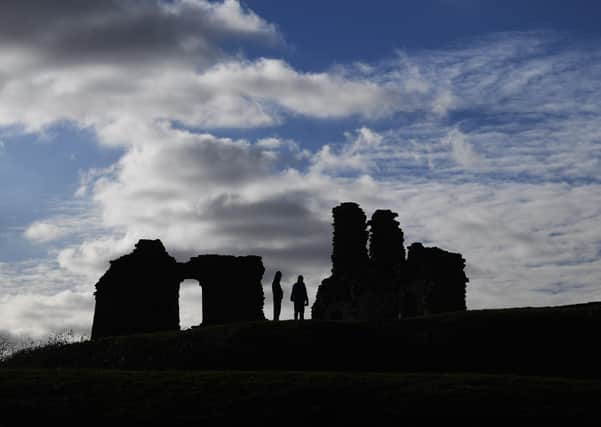Picture Post: The turbulent shadow of history behind Sandal Castle’s ruins


The castle is believed to have been originally built in the early 12th Century and remained in the hands of the de Warenne family until 1361 – aside from a brief period after 1317 when the castle was attacked and captured by the Earl of Lancaster.
From 1361 onwards, the castle was in Royal hands but they were largely absentee landlords until in 1484, when Richard III ordered building work to take place to establish Sandal as his northern base.
Advertisement
Hide AdAdvertisement
Hide AdHowever those plans were swiftly ended by his defeat and death at the Battle of Bosworth in 1485.
Twenty-five years before Richard’s death, Sandal had witnessed a key event in the Wars of the Roses as the Battle of Wakefield in which hundreds died – including the Duke of York – took place below the castle walls in December 1460.
The castle was then left to fall into decay but was immortalised in literature in the 1590s when Shakespeare used it as a setting in his play Henry VI, Part 3.
Sandal was refortified and briefly used as Royalist garrison in 1645 during the English Civil War where it was besieged by Parliamentarian troops three times. According to the Wakefield Council website, “The occupation lasted only a few months and the castle surrendered on October 1, 1645.
Advertisement
Hide AdAdvertisement
Hide Ad“In 1646 on the orders of Parliament the castle was stripped of its defences. The heap of stonework that was left quickly became overgrown.”
The masonry that did survive was revealed during excavations that took place in the 1960s and 1970s, while Wakefield Council now works with Historic England on the ongoing preservation of the important historical site.
Times have undoubtedly changed for the better but Sandal Castle provides an important reminder of many challenging chapters of our nation’s history – as well as being a space that will attract visitors new and old for generations to come.
Technical info: Nikon D5 with a 12-24mm lens, exposure of 1/500th sec at f8, ISO 200. Picture by Simon Hulme
Advertisement
Hide AdAdvertisement
Hide AdSupport The Yorkshire Post and become a subscriber today. Your subscription will help us to continue to bring quality news to the people of Yorkshire. In return, you’ll see fewer ads on site, get free access to our app and receive exclusive members-only offers. Click here to subscribe.
Comment Guidelines
National World encourages reader discussion on our stories. User feedback, insights and back-and-forth exchanges add a rich layer of context to reporting. Please review our Community Guidelines before commenting.